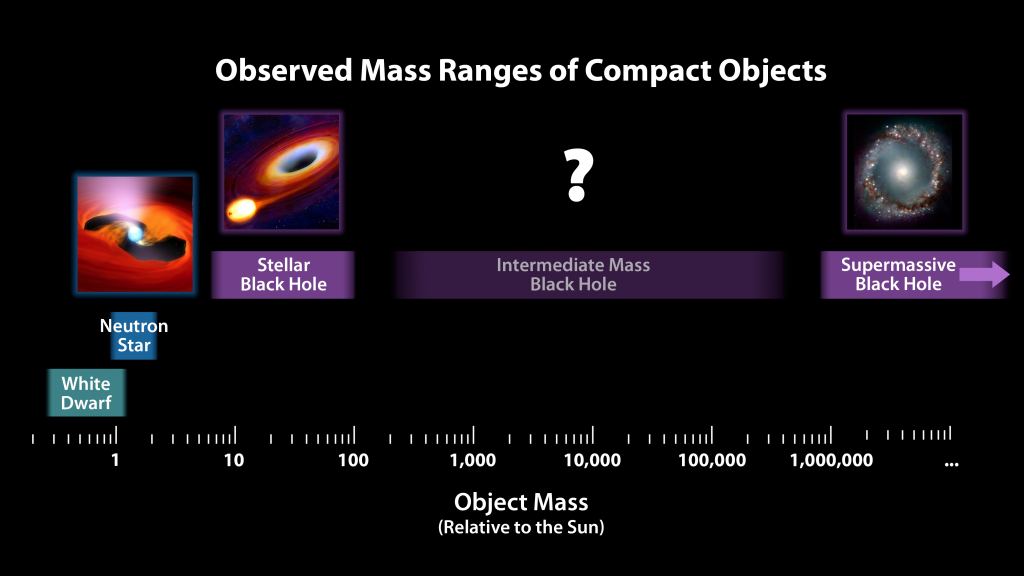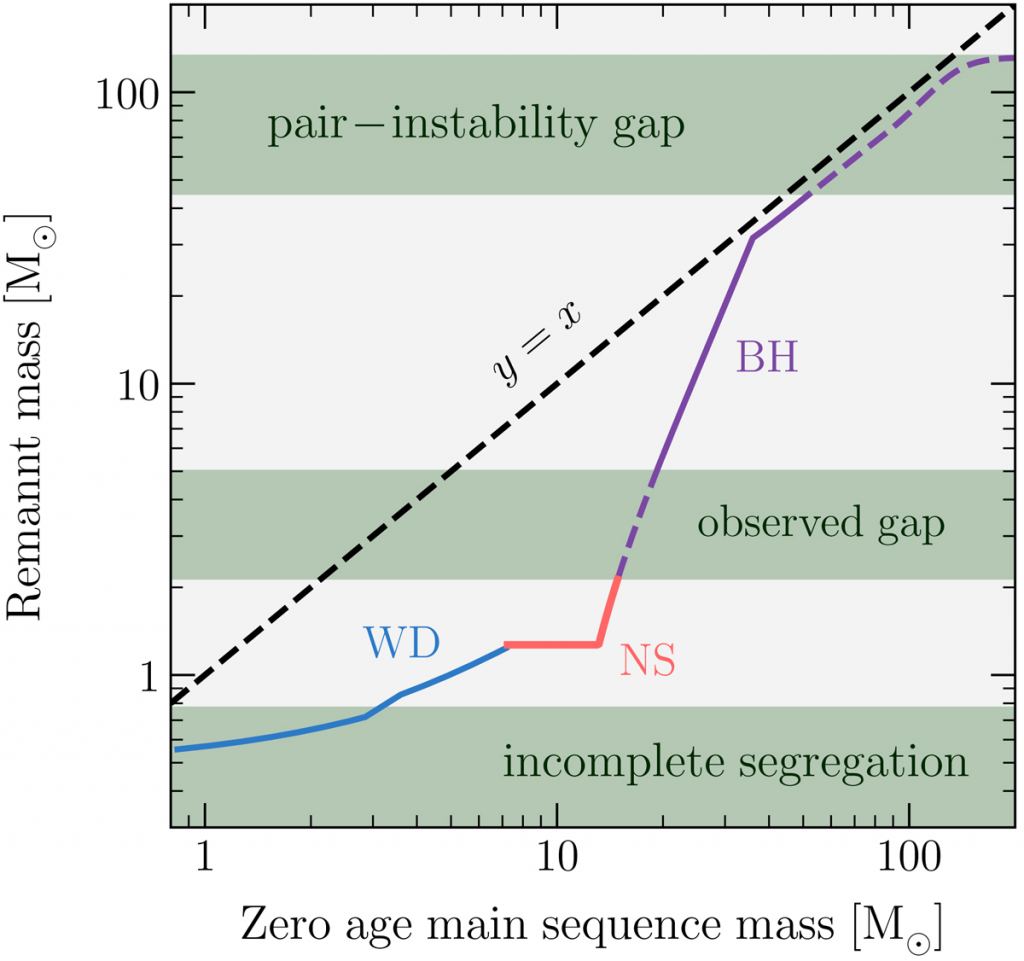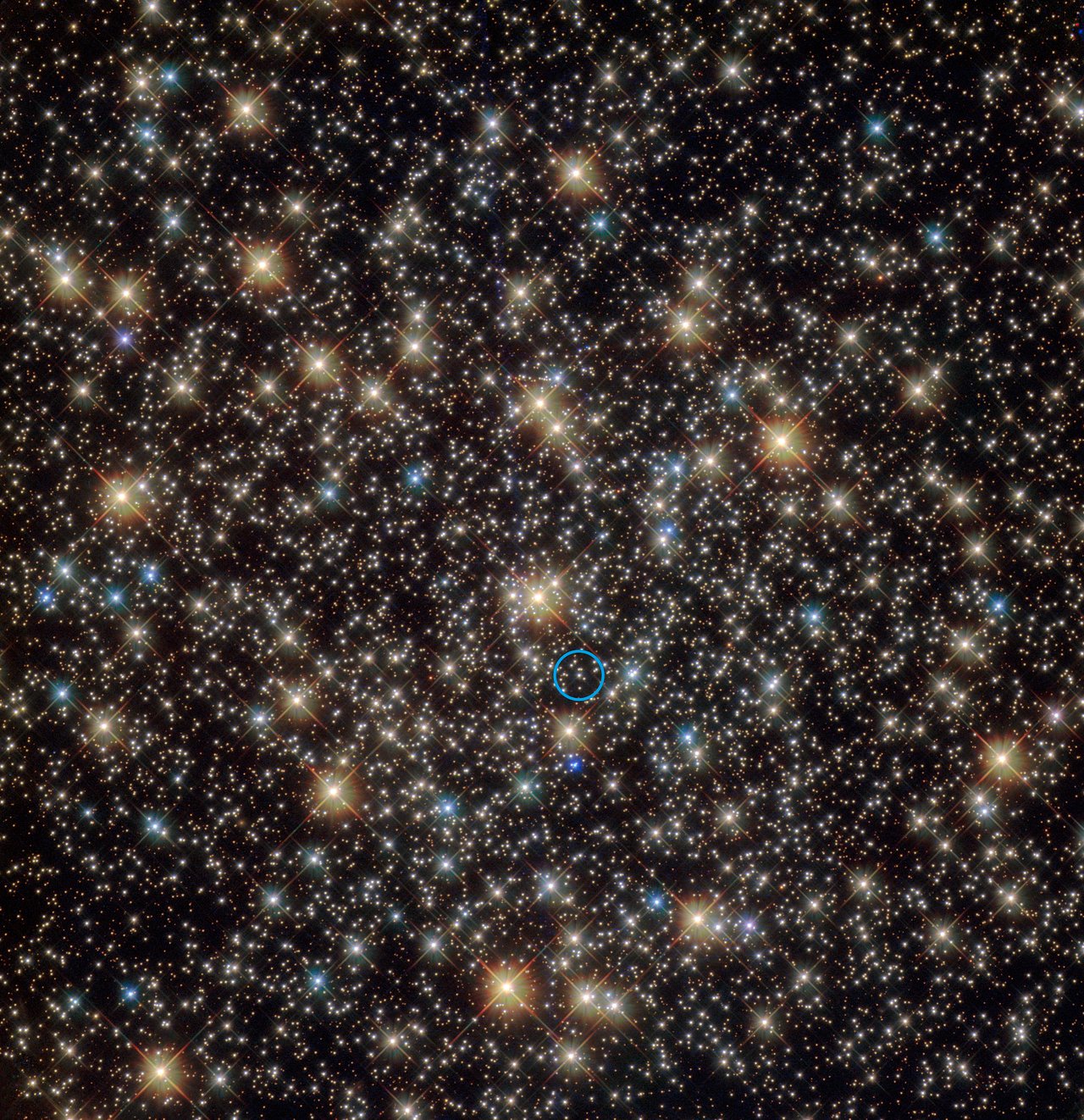Black holes come in at least two sizes: small and large. Small black holes are formed from stars. When a large star reaches the end of its life, it typically ends in a supernova. The remnant core then collapses under its own weight, forming a black hole or neutron star. Small stellar-mass black holes are typically tens of solar masses. Large black holes lurk in the centers of galaxies. These supermassive black holes can be millions or billions of solar masses. They formed during the early universe and triggered the formation and evolution of galaxies around them.

But perhaps black holes also come in medium. These intermediate mass black holes (IMBHs) might grow from the rapid mergers of stellar-mass black holes, and would be hundreds or thousands of solar masses. It’s long been thought that intermediate-mass black holes could form in the hearts of globular clusters.
Globular clusters are dense stellar clusters typically containing hundreds of thousands of stars. They formed in the early history of the universe and may be older than galaxies themselves. Because globular clusters are densely packed, their stars often have close encounters. These flybys tend to drive smaller, less massive stars toward the outer regions of the clusters, and more massive stars towards the center. Thus, it’s possible that stars in the core of a globular cluster could merge to create an intermediate-mass black hole.
It’s difficult to prove IMBHs exist, however. Globular clusters are so dense that it’s hard to study their central regions. And if globular clusters contain intermediate black holes, they are too old to be very active, so we can’t identify them by things like jets. As a result, we only have a few potential candidates for IMBHs. Recently a team looked at the globular cluster NGC 6397, which is the closest cluster to Earth. What they found was rather surprising.

Since the globular cluster is so dense, the team looked at line spectra from the cluster to determine the motion of stars in the cluster. As stars orbit the core of the globular cluster, their motion relative to Earth causes their line spectra to shift due to the Doppler effect. Even without observing individual stars, the team could get a statistical distribution of their motion.
If an intermediate-mass black hole was at the center of NGC 6397, then the stellar speeds should be uniformly distributed, with central stars orbiting faster than those on the periphery. Instead, the team found a dynamical gap in stellar motion. This points to the idea that there is no central mass in the cluster. Instead, the central region is likely filled with white dwarfs, neutron stars, and stellar-mass black holes.
While many globular clusters might contain an intermediate black hole, we now know that isn’t always the case. This latest study shows that the dynamics of black hole formation is complex, and we still have much to learn.
Reference: Vitral, Eduardo, and Gary A. Mamon. “Does NGC 6397 contain an intermediate-mass black hole or a more diffuse inner sub-cluster?” Astronomy & Astrophysics 646 (2021): A63.


Possible nitpick: Image text indicates speed gap, image shows mass gap.
This sounds eerily similar to the Black Rosette in the Omega cluster, from Ian Douglas’ “Star Carrier” series. Now if we could just find six black holes circling about a common center….